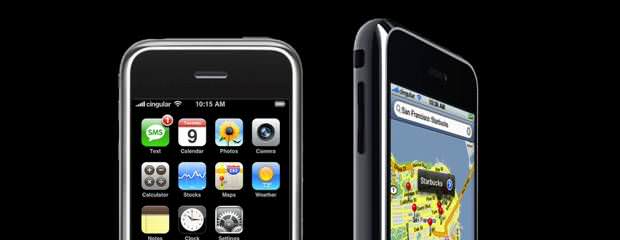
How schools are reacting to Apple's entry into education
When Apple announced its textbook initiative on Thursday, there was a rush of excitement among educators. Textbooks from major publishers, which can cost $40 to $75 dollars in print, would be available as interactive e-books for $15 or less. The new iBooks Author application could turn anyone into a publisher, with its simple interactive e-book creation tools.
The time there
But at the time there was the small print: In order to buy and read these textbooks, each student will have to own an Apple iPad. No computer, off-brand tablet, or even iPhone or iPod touch will work. Books made with the new iBooks Author application are only viewable on iPads in the iBooks 2 app, can only be sold through Apple’s iBookstore, and cannot be exported as ePubs, the standard open format for all e-book files.
“We looked at each other afterwards the announcement, and said ‘Apple must have been reading our minds. This is specifically what we’ve been talking about,’” said Eric Spross, director of innovation at the private Menlo School in Atherton, Calif.
“We felt that laptops and desktops focus students too much on the research and not enough on the content or communication with another human,” said Spross. “We choose iPads because they’re lightweight, portable, have a long battery life, and are self-service. They’re easier to support.”
Apple’s education announcement was the missing piece in a puzzle for Menlo School. Although it already had the iPad program, its devices hadn’t made the leap to being e-readers due to a dearth of e-textbooks. Apple’s new partnerships with publishers Houghton Mifflin Harcourt, McGraw-Hill, and Pearson will fix that. Teachers were streaming some iTunes U content, however not much since publishing was limited to university-level courses. Now iTunes U is open to high schools, and a new iTunes U iOS app makes the content accessible from anywhere. Interestingly, Spross said teachers were as well eager for a way to create and share their own lessons and books, which they can do on iBooks Author.
Tuition for Menlo School is $34,900 year. The school purchased all the iPads at full price from its own innovation budget.
Research budget
“We don’t actually have a research budget,” said Maria De La Vega, superintendent of East Palo Alto’s Ravenswood public school district. “Most of what we’ve been able to acquire has been through donations and leftovers from offices closing down.” HP donated a number of small laptops to the district, so there’s now one computer for every sixth to eigth grade student. Those devices would be unable to read the new digital textbooks or any content created with iBooks Author.
The iPad is currently the most expensive consumer tablet on the market, starting at $499. During Apple is bringing down the prices of iPad-only textbooks, the company does not offer any known discounts on its iPad, iPhone, or iPod touch hardware to educational institutions, even for bulk orders.
The near 100,000 U.S.
The near 100,000 U.S. public schools face restraints beyond money. They are as well bound by state and federal regulations that dictate what books they use and what they can spend money on. Unless the full, approved list of books are made available on the iPad, these schools wouldn’t be able to save money by switching to the Apple tablets.
“Teachers in private schools can select their own textbooks. Public schools can’t. That’s a distinction that’s larger than having iPads or if they can afford the innovation,” said Spross. He pointed out that it’s not all bleak for public schools: “Some of the most compelling and innovative work has been in public schools, in very scientific, state-sponsored programs.”
Apple was an early adopter of cloud storage for consumers. Steve Jobs unveiled the company’s iCloud service in June 2011, which enables you to store music, books, photos, contacts, calendars, and more in the cloud. Tying a file to one piece of hardware is a step back for a company that knows the future is accessing your data from multiple devices.
Only when public schools can put these $15 e-textbooks on donated laptops, inexpensive e-ink readers, smartphones, and various devices students may already own, can Apple’s textbook “reinvention” be taken in all seriousness by public schools. Apple should update its iBook Author application export to ePub 3 and rewrite the iBooks Author end user license agreement so that books made with the application can be sold anywhere.
At Menlo School, Spross is already busy figuring out how to best use the new Apple products. “Without this last piece it was, ‘Wow, great gizmo with a lot of potential, however does it mean anything?’”
Next Story: Samsung’s transparent display could help retailers draw crowds to windows Previous Story: Peecho’s “License to Print” nets it $750,000 in funding
- ·
Why Are Some Pearsons Text Books Not Available On
- · Rackspace debuts OpenStack cloud servers
- · America's broadband adoption challenges
- · EPAM Systems Leverages the Cloud to Enhance Its Global Delivery Model With Nimbula Director
- · Telcom & Data intros emergency VOIP phones
- · Lorton Data Announces Partnership with Krengeltech Through A-Qua⢠Integration into DocuMailer
